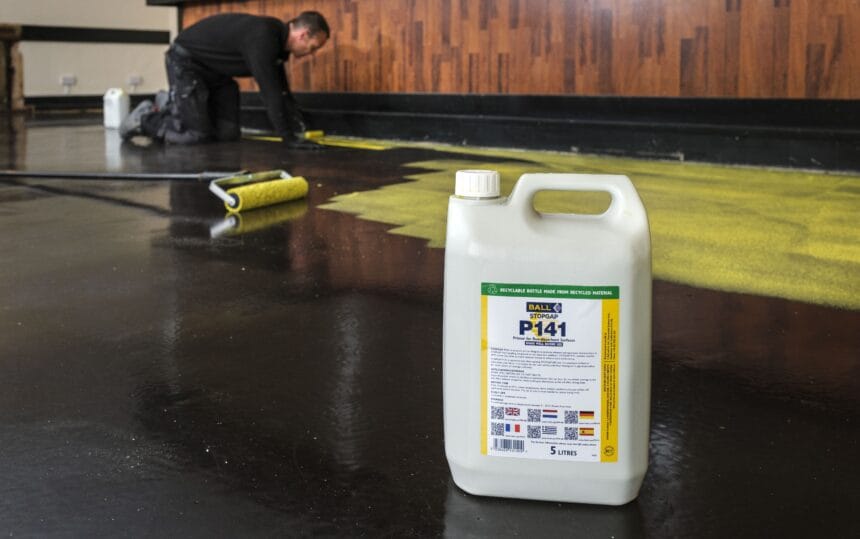Prime Importance

When it comes to preparing a subfloor for the installation of floorcoverings, priming is sometimes an overlooked step. While it is often thought of as unnecessary, costly or time-consuming, priming can be the difference between a successful flooring installation and complete floor failure. F. Ball technical service officer Chris McQuade explains why and how to choose the optimum primer for a particular situation.
When selecting an adhesive to install resilient floorcoverings in settings subject to extreme temperatures and temperature fluctuations, historically, contractors had to forgo pressure sensitive characteristics in favour of temperature tolerant ones. Fortunately, there is now a range of temperature tolerant adhesives to choose from, often with extra features, including pressure sensitive characteristics, meaning contractors benefit from the best of both.
Such products can be advantageous in environments which are subject to ‘solar gain’, including those with floor-to-ceiling windows, commonly found in offices, leisure centres and retail outlets. When exposed to extreme temperature changes, floorcoverings can be liable to expand and contract significantly which over time, leads to unsightly tenting and gapping – particularly in installations with vinyl tiles or planks.
To avoid such occurrences, temperature tolerant adhesives should be used to keep floorcoverings secure, restricting their movement and ensuring the long-lasting performance of installations.
Hybrid adhesives
Ongoing innovation has enabled manufacturers to add new features to adhesives to make them increasingly versatile, such as high-performance hybrid products which combine temperature tolerance with pressure sensitive properties.
For example, Styccobond F49 is a water-based vinyl adhesive with the familiar characteristics of a pressure sensitive adhesive, which develops the extremely high bond strength and dimensional stability required to hold vinyl floorcoverings firmly in place in areas exposed to extreme temperature fluctuations (from -20°C to +60°C).
The product is a great choice for installing vinyl tiles and planks, especially when creating intricate patterns and bespoke designs that need precise alignment. Whilst providing high initial tack, the adhesive allows contractors to lift and reposition floorcoverings in the initial stages of drying.
Styccobond F49 has also been approved for installing vertical flooring accessories, such as PVC skirting, capping and coving, meaning it offers an alternative to traditional contact adhesives. However, unlike contact adhesives, the hybrid adhesive only needs to be applied to one surface and also allows for accessories to be repositioned as needed. Styccobond F49 is also resistant to water, allowing it to be used in areas subject to water and high humidity, including wet rooms.
